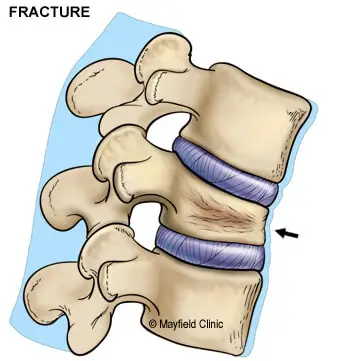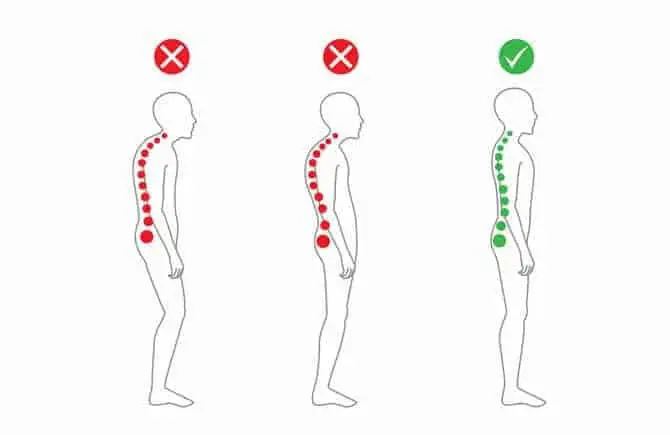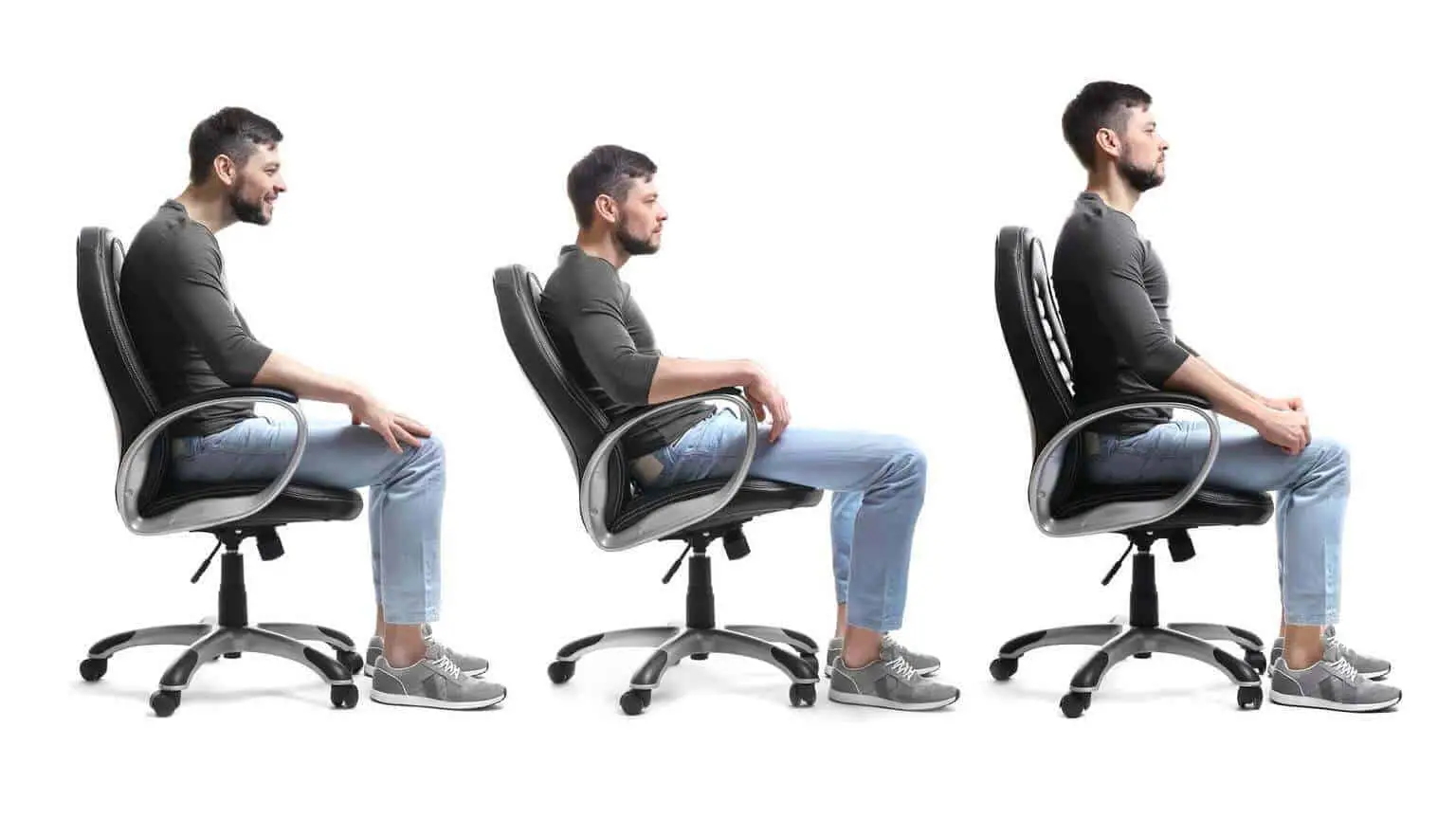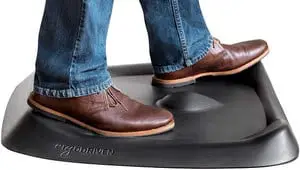All content and media on Office Solution Pro is created and published online for informational purposes only. It is not intended to be a substitute for professional medical advice and should not be relied on as health or personal advice. This post contains affiliate links.
Did you know that nearly 1.5 million Americans suffer from fractured vertebrae on an annual basis? True, fractures in the vertebrae rarely require admission to the hospital. However, they can be severe and pose the threat of significant disability for months at a time. Recovering from a fractured vertebra is challenging.
How to sit with a fractured vertebrae? The best way to sit with a fractured vertebrae is sitting tall in a perch position, using a straight-back chair. Additionally, wearing a back brace during the first few weeks following your fracture can also be helpful to keep the spine upright. Don’t sit for long periods of time.
Still, there are other factors to consider when teaching yourself how to sit correctly with a fractured vertebrae. It’s essential to educate yourself to protect your vertebrae’s healing, especially if you need to sit for extended periods. Read on to find out how to care for your fracture and how to stay comfortable while sitting.
What is a Fractured Vertebrae?
A Vertebral Compression Fracture (more commonly known as fractured vertebrae) happens when the bony block in the spine collapses, which may lead to excruciating pain, loss of height, and deformity. Vertebral compression fractures happen more often in the middle portion of the spine, especially in the lower part.
Imagine each bone in your spine as a square block. When the bone breaks, it is like the “box” becomes squashed or compressed. Almost two-thirds of broken bones in the spine happen without causing any pain and are found either on an X-ray or because your healthcare provider thinks you lost height.
What Causes Fractured Vertebrae?


A vertebral compression fracture is typically caused by a loss of bone mass (osteoporosis) that happens as part of the aging process. Other times, a traumatic event can put too much pressure on the spine, causing the vertebrae to break because they can’t withstand the force.
People with brittle bones (osteoporosis) are more at risk for spinal fractures. Simple activities, like sneezing, stepping out of the shower, or picking up a bag of groceries can cause a fracture.
However, in people with moderate osteoporosis, it often needs bigger force or trauma, like falling down or trying to lift a heavy object to cause a vertebral compression fracture. People with healthy spines commonly suffer a fractured vertebrae through severe trauma, such as a sports injury, car accident, or a hard fall.
What Are the Symptoms of Fractured Vertebrae?
SPINE-health states that there are typically no symptoms until a fracture occurs. Often, people with back pain are unaware that they actually have fractured a vertebra (or multiple vertebrae) in their spine. The main symptoms of a vertebral compression fracture include one or a combination of the following:
- Sudden feelings of back pain
- Increased pain during walking or standing
- Decreased pain when lying on the back
- Reduced height
- Reduced spinal mobility
- Deformity and rounding of the spine
How to Sit With a Fractured Vertebrae
An important part of your recovery is to learn how to perform safe movement techniques, done in a way that doesn’t put additional strain on the spine. This includes sitting down and getting up from a chair, especially if you need to work behind a desk. Here are the important steps on how to sit with a fractured vertebrae:
1. Start By Understanding Neutral Spine Position

The first and most important step to perform day-to-day activities after a vertebral fracture is to understand a neutral spine. First, understand that there are 24 bones altogether. Each bone has different shapes and sizes.
A neutral spine is when each of these 24 bones are perfectly aligned and are stacked on top of the other, forming three gentle natural curves that create a strong support post for the head. This perfect alignment is the strongest and safest position for the spine, giving you the foundation to sit in better comfort.
PRO TIP: Even when your spine is neutral and a movement is done correctly, some movements may be painful, especially during the early stages of recovery. Although it may be painful in the beginning to get into the neutral spine position because of your stiff back muscles, it is the best position to protect your spine.
2. Use the Right Kind of Chair

The best ergonomic chair can help promote proper posture.
Most chairs do not always accommodate your specific needs for spinal support. In an effort to keep the spine neutral, while allowing the back muscles to relax, use the best ergonomic office chair. These chairs are expertly designed to support your spine and is the best investment you can make to work in ultimate comfort.
It doesn’t matter how well you sit. At the end of the day, you can’t find proper spine alignment if you don’t have the right furniture. A poorly designed chair can force you to sit in an awkward position and slouch, causing unnecessary strain on your back and hindering your recovery from a fractured vertebrae.
3. Sit By Imagining Balancing a Book on Your Head
To sit down in your chair, keep your head high and imagine that you are balancing a book on your head as you lower yourself to the edge of the seat, as recommended by Osteoporosis Canada. Once you perch yourself on the edge of the seat, stay upright and slide to the back of the chair slowly.
Once you are seated, it’s very important to keep the spine neutral at all times. One excellent way to do this is to use an ergonomic back support to keep the spine tall, while keeping it relaxed at the same time. You can also use a folded towel and place it on the lumbar (lower back) area of the chair.
Similarly, standing up from a sitting position can be a challenge as it puts a huge strain on the spine. Most people have the tendency to round the spine when standing from a chair. Therefore, it’s paramount to train your muscles to stand up from a sitting position with your head held high to minimize spinal strain.
4. Wear a Back Brace and Apply Ice
Additionally, wearing an ergonomic back brace during the first few weeks following a fractured vertebrae can help keep your spine upright, reducing the work your muscles have to do. Not only does it help reduce the discomfort, but it ensures that your movement around the fracture is careful and fully controlled.
Another excellent home care tip is to apply an ice pack over the injured area for 15 to 20 minutes every 3 to 6 hours, as recommended by Fairview. It’s a good idea to do this for the first 24 to 48 hours. You can start with ice to reduce inflammation, then switch to heat after 2 days to treat muscle spasms.
5. Be Diligent With Physical Therapy
Once the fracture has healed, your trained healthcare professional will recommend exercises to strengthen the muscles that support your spine. If you want to achieve better results when recovering from a fractured vertebrae, then it’s important to follow the program given by your physical therapist diligently.
Don’t sit for long periods of time. This puts more stress on the lower back than standing or walking. A great way to start is by taking a break once every 30 minutes of sitting. Set a timer to remind yourself to vary your posture, stand up, and reduce stress on your back. You can then slowly increase the time you spend walking.
PRO TIP: According to the Royal Osteoporosis Society, some people find relief from pain by using reclining chairs with a high back and lumbar support. If you are unable to sleep at night, you can occasionally try sleeping in a reclining armchair. We’ve rounded the best recliners so be sure to review them if you need one.
Bottom Line
Learning how to sit correctly with a fractured vertebrae will help you heal and prevent re-injury in the future. While your body may have been able to tolerate bad posture habits before the injury, you need to apply new good habits so you can perform day-to-day activities like you used to, after the spine fracture.
Start by investing in the right chair, practicing the proper methods for sitting, and maintaining correct posture throughout your day. Additionally, you can also use ergonomic cushions or wear a back brace for additional support. If the pain continues, talk to your healthcare provider about other ways to manage your pain.
You may also want to read:








